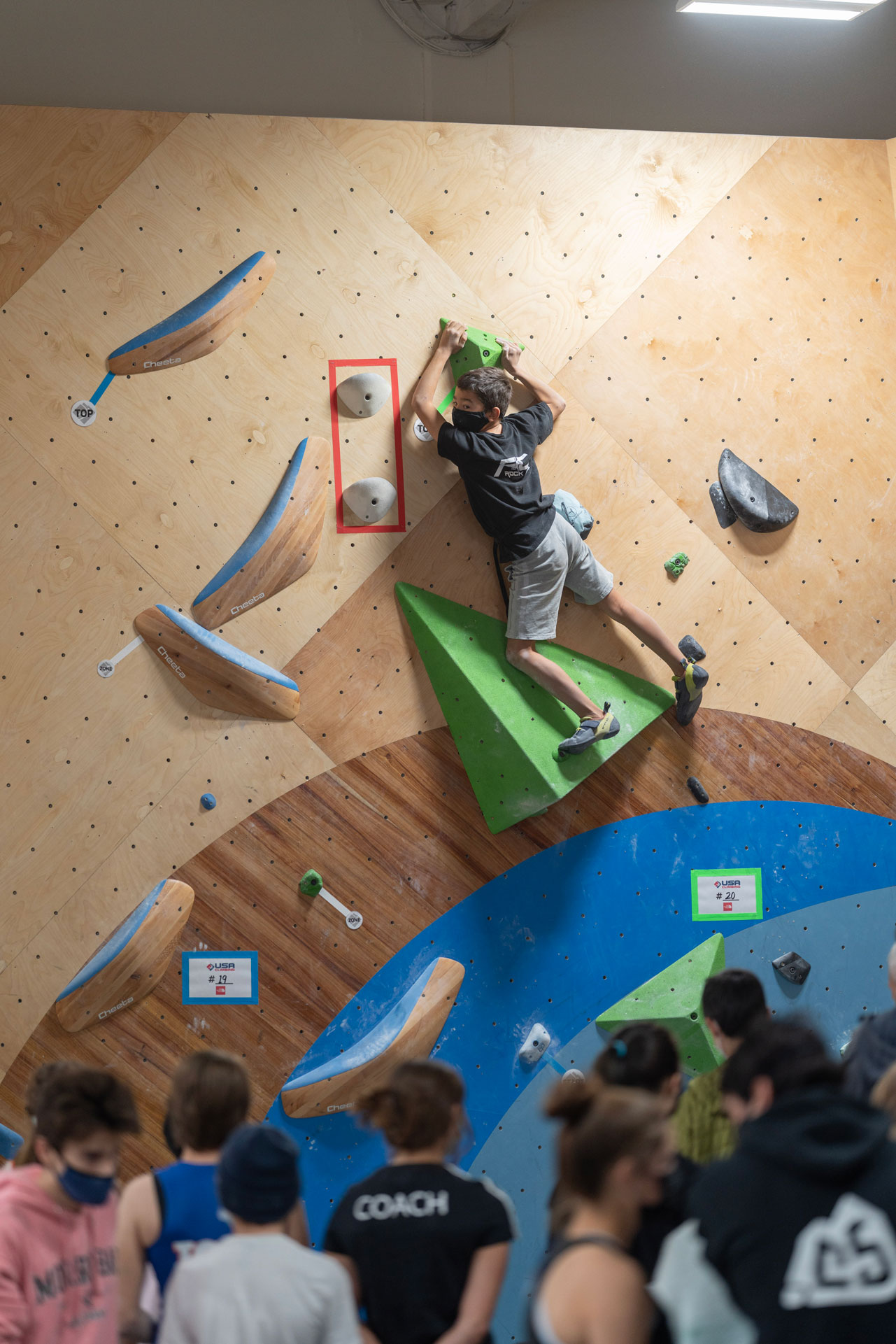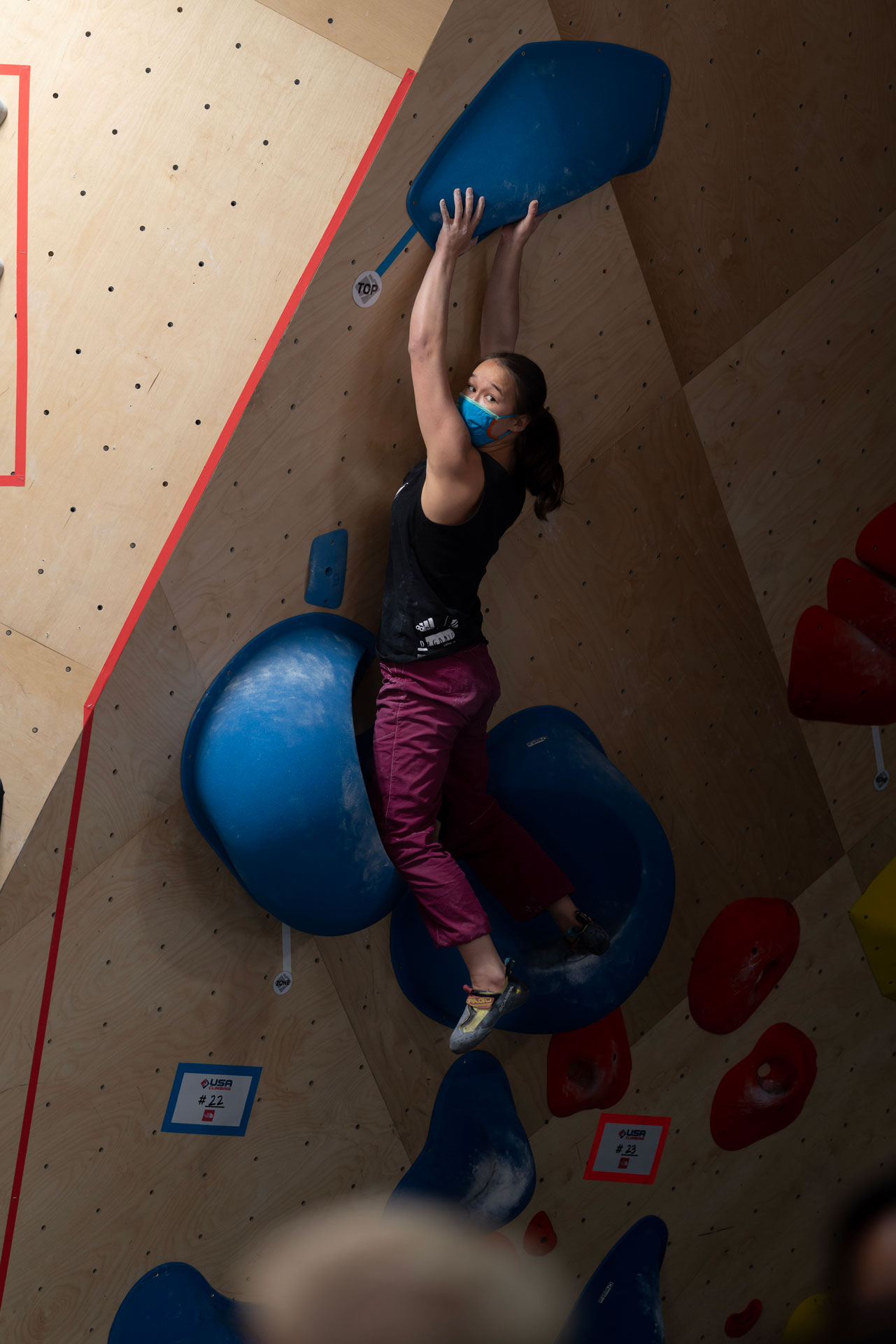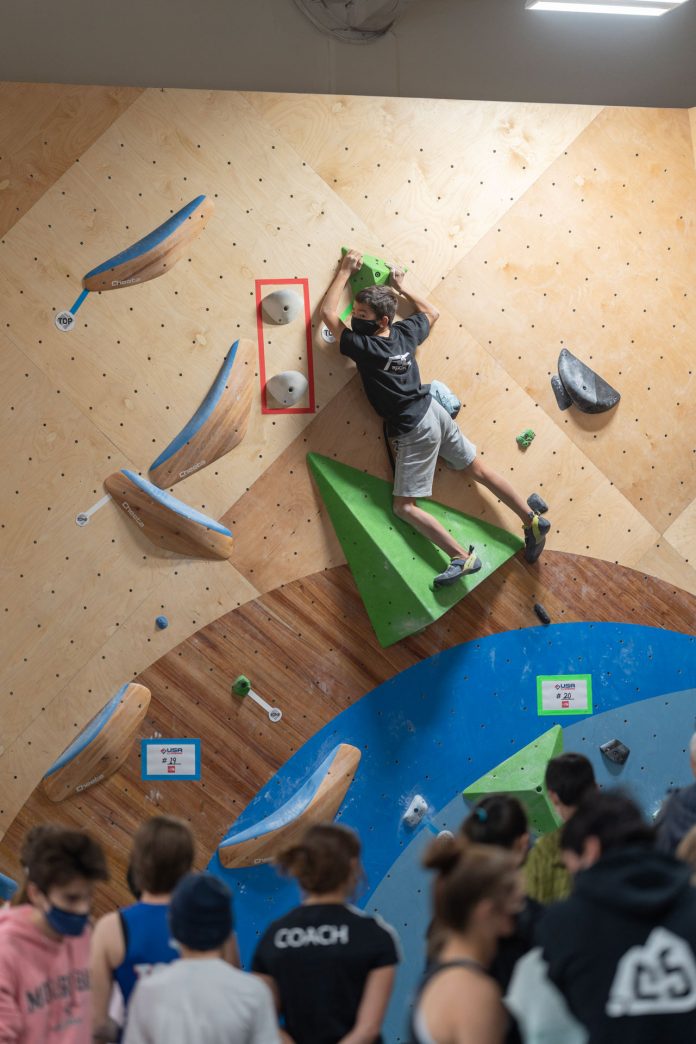
The Pacific Climbing Series, a new circuit of youth bouldering competitions at various California and Nevada gyms, kicks off this weekend (September 21), with events at The Oaks Touchstone in Berkeley and Mesa Rim Academy in San Diego. The series will continue through October and November, with a total of four qualifying comps in Southern California and four qualifying comps in the northern Pacific region. The events will funnel into a championship final, which is slated for December 7th at Touchstone Pacific Pipe in Oakland. The cost of (early) registration is $75 per event.
Although the timing of the Pacific Climbing Series’ creation aligns with pushback that many of the participating gyms gave to USA Climbing’s proposed National Training Center project, the roots of the new series trace back to the early days of the COVID pandemic, in 2020. “One of the only silver linings of COVID was that it brought together all of the gyms that really had never talked to each other before,” Wes Shih, co-founder of Sender One, told CBJ. (Sender One is one of the gyms participating in the new Pacific Climbing Series, and Shih is one of the series’ creators.) “Even the gyms coming together about the [USA Climbing] National Training Center, that came from communication channels that opened because of COVID.”
The Pacific Climbing Series aims to differentiate itself from USA Climbing’s competitions, particularly by attracting a more recreational cohort than the USA Climbing competitions, while still being a “real” competition, according to Shih and other participating gyms owners. “I think some of us [gym owners] realized not that we wanted to ‘stick it’ to USA Climbing, but more that we all run competitions, we all see where competitions have gone and where they continue to go, and we all think that there is a need—or something underserved—that’s not being paid attention to,” Shih said. “This was gyms around California with pretty close ties after COVID saying, ‘Hey, we all run competitions anyway, and we all feel this pull…It’s an experiment in ways, other than USA Climbing comps, that we can balance the competitive aspects with other interests, like inclusivity of more skill and interest levels of competitors, community-building, etc.”
Shih cited other youth sports, such as soccer, that have abundant options of leagues for varying levels. He considers the Pacific Climbing Series, particularly in this inaugural “pilot season,” to be a venture to find out if the climbing industry will embrace this form of recreational—albeit, still competitive—league that spans multiple gyms. And although gyms’ limited resources will mean that some facilities will have to choose whether to host a Pacific Climbing Series competition or a USA Climbing series, there is no provision or expectation of hosting exclusivity. For example, Shih’s Sender One in Lakewood, California, is hosting a Pacific Climbing Series event on November 2 and a USA Climbing Speed qualifying event in the spring.

Ian McIntosh, CEO of Mesa Rim gyms, sees the Pacific Climbing Series as a rising tide that can raise all boats—and provide more competition options for more people. “The [Pacific Climbing Series] was born from a genuine interest in collaborating with our neighboring gyms to collectively explore alternative ways to serve the youth climbing community,” McIntosh told CBJ. “Most of the participating gyms have hosted some form of youth series over the years, so this year we decided to try something bigger together. This is a pilot program, and we will learn a lot in the process that can be applied to future iterations. I believe it is in the best interest of the competitive climbing community to explore alternative competition structures and to continue developing opportunities for both experienced and aspiring athletes to grow and thrive as competitors.”
Both McIntosh and Shih think that the Pacific Climbing Series, by operating outside of the USA Climbing framework, will have more freedom for operational creativity and format diversity. “[USA Climbing] comps all have a way that’s grown over time of how they’re run, and the quality you can expect from them because of their constraints,” explained Shih. “By decoupling recreational competition from the only provider in town, that lets us have more flexibility in what we can do or what we’re able to invest in.”
The Pacific Climbing Series is working on a real-time (electronic) scoring system, and is also basing youth competitors’ age categories on single calendar years—a difference from the current USA Climbing (and IFSC) format. Scores for each Pacific Climbing Series event will follow a two-zone-per-boulder point system, in a structure that the series is labeling a hybrid modified redpoint format. In fact, the Pacific Climbing Series’ structure and format largely resulted from feedback to surveys, which were given to members of participating gyms earlier in the year.
Still, it is all subject to change as Shih, McIntosh and other gym owners try to fine-tune the concept. “The Pacific Climbing Series really is an experiment,” Shih reiterated, “trying to address this need that we all feel.”
Stay tuned to CBJ for additional information about the new Pacific Climbing Series.

John Burgman is the author of High Drama, a book that chronicles the history of American competition climbing. He is a Fulbright journalism grant recipient and a former magazine editor. He holds a master’s degree from New York University and bachelor’s degree from Miami University. In addition to writing, he coaches a youth bouldering team. Follow him on Twitter @John_Burgman and Instagram @jbclimbs. Read our interview Meet John Burgman, U.S. Comp Climbing’s Top Journalist.








